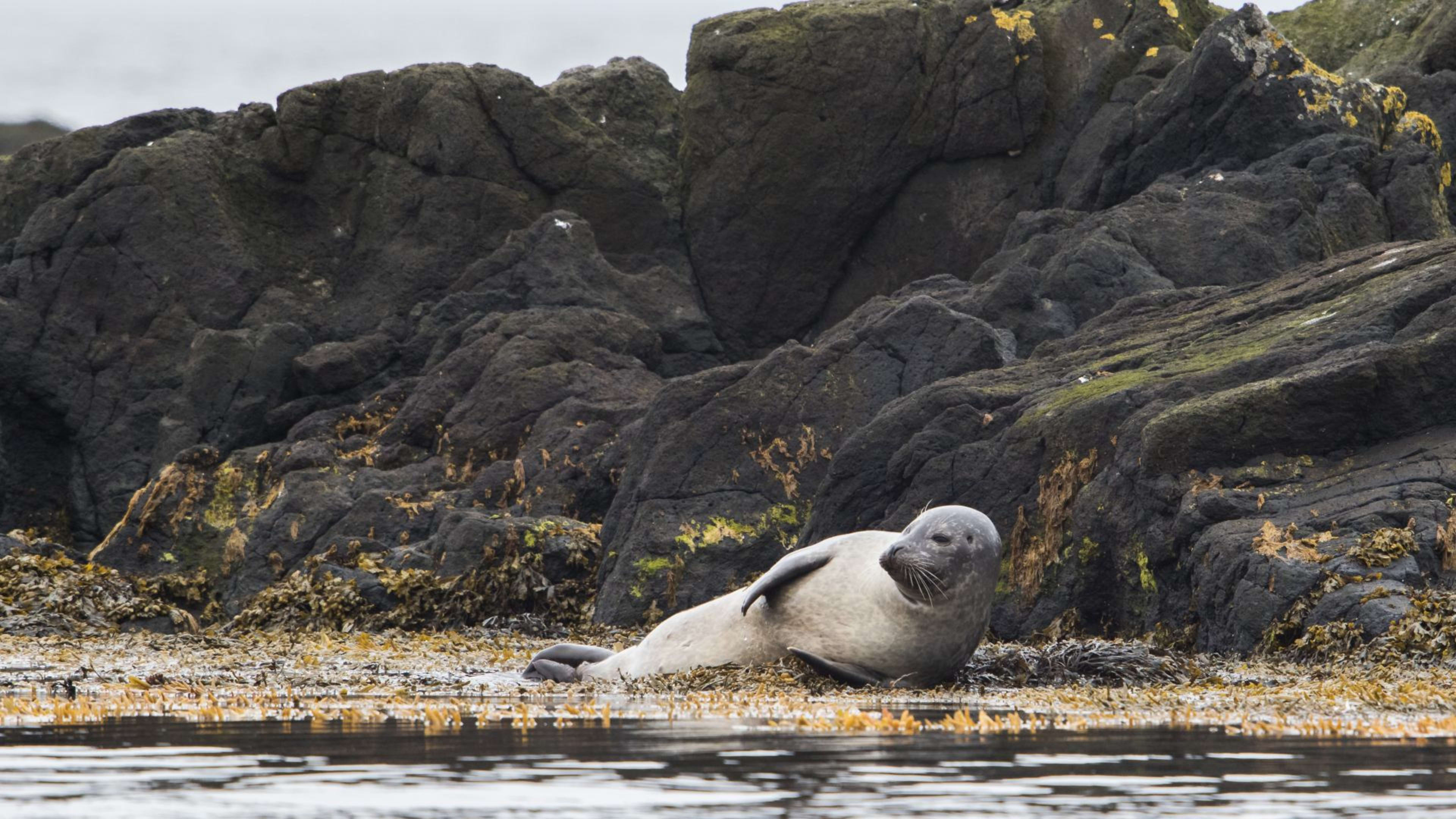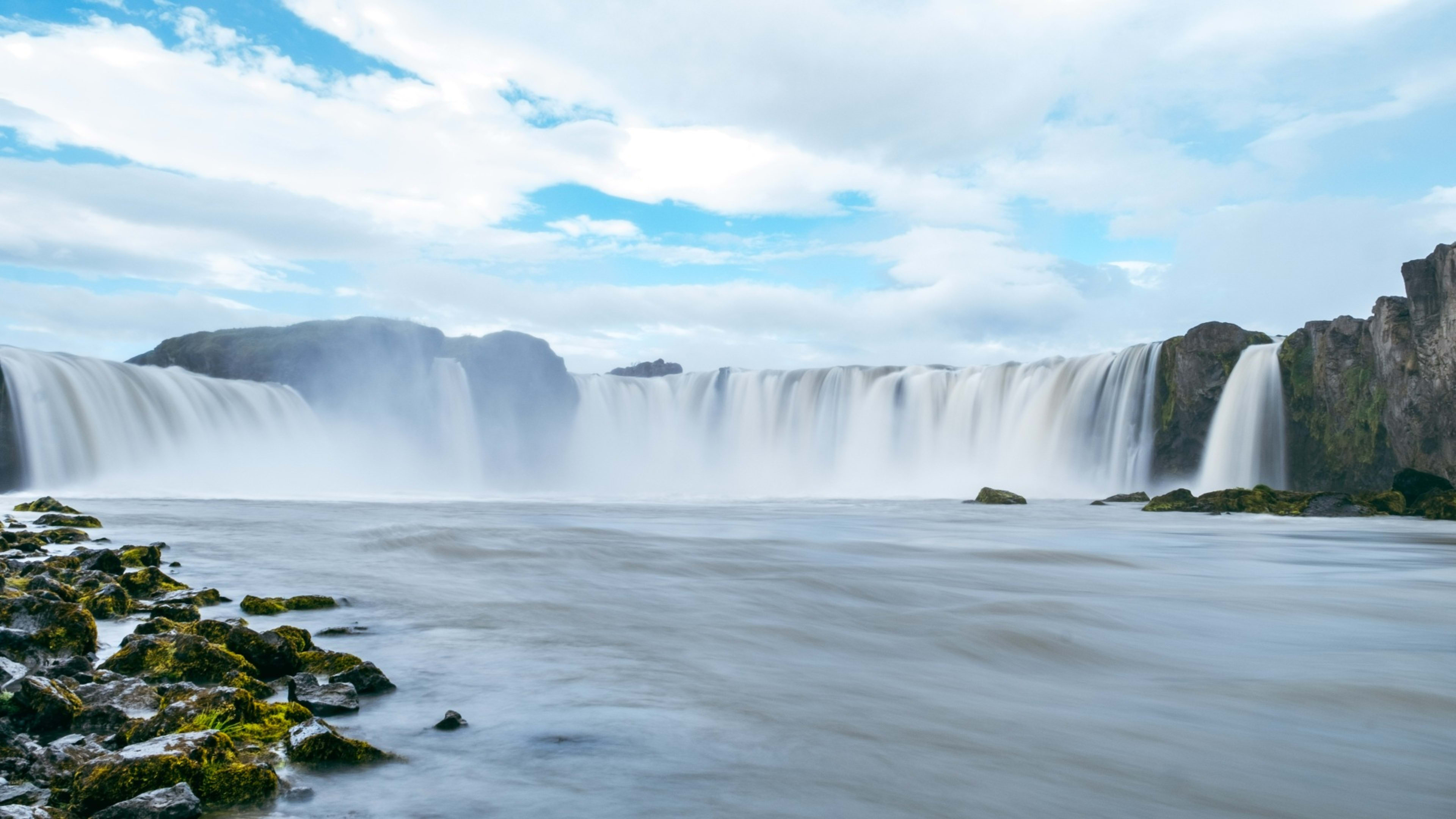Your Guide to Glaumbær Turf House Museum - Iceland's Living History
Glaumbær is one of those places that'll completely change how you think about Icelandic history. This incredible folk museum in North Iceland showcases traditional turf houses that were home to real families until surprisingly recently - we're talking 1947, not some distant medieval past.
Picture this - 13 connected turf buildings that look like they're growing straight out of the earth, with grass-covered roofs that blend perfectly into the landscape. These aren't just museum pieces - they're beautifully preserved examples of how Icelanders lived for over a thousand years, from the Viking settlement era right up to the mid-20th century.
Located in the scenic Skagafjörður fjord area, about 1 hour west of Akureyri, Glaumbær offers this incredible glimpse into authentic Icelandic life. And here's what makes it really special - you can actually walk through these homes and experience what daily life was like for generations of Icelandic families.
What Makes Turf Houses So Special
Turf houses (called torfbæir in Icelandic) were basically Iceland's answer to extreme weather and limited building materials. These weren't primitive dwellings - they were sophisticated, sustainable architecture perfectly adapted to Iceland's harsh climate.
The Genius of Turf Construction
Materials: Stone foundations, timber frames, and layers of turf that provided incredible insulation Design: Thick walls (sometimes over a meter wide) kept interiors warm even in brutal winters Sustainability: Built entirely from local, renewable materials Longevity: Could last for generations with proper maintenance
Why turf worked so well: Iceland had very few trees but tons of turf. The grass and earth created this amazing natural insulation system that kept homes warm using minimal fuel - genius when wood was scarce and expensive.
Living Architecture
What's really cool about turf houses is how they were living, breathing structures. The grass on the roof kept growing, needing regular maintenance and occasional reseeding. In summer, families would literally mow their roofs!
Exploring the 13 Buildings at Glaumbær
Each building at Glaumbær served a specific purpose, and walking through them gives you this incredible sense of how complex and organized traditional Icelandic farm life really was.
The Main House - Heart of Family Life
The centerpiece is the main residential building, built around the baðstofa - the communal living room that was basically the heart of Icelandic home life.
What you'll see in the baðstofa:
- Sleeping areas along the walls where entire families slept together for warmth
- Work areas where people did handicrafts, mended tools, and told stories
- Eating spaces where all meals were shared
- The central area where community life happened
Why it mattered: During long dark winters, families spent most of their time in this one room. It was bedroom, dining room, workshop, and social center all rolled into one.
Specialized Buildings
Kitchen (eldhús): Separate building to reduce fire risk, with traditional cooking methods and food storage Guestrooms: For visitors and seasonal workers Workshops: Including a blacksmith's area for tool making and repair Storage buildings: For food, tools, and seasonal equipment
Pro tip: Take your time in each building - the details tell incredible stories about how people lived, worked, and survived in this challenging environment.
The Incredible History of Glaumbær
Guðríður Þorbjarnardóttir - Iceland's Greatest Explorer
Right next to Glaumbær Church, you'll find a statue commemorating one of Iceland's most remarkable historical figures - Guðríður Þorbjarnardóttir, who lived at Glaumbær in the 11th century.
Why she's incredible:
- Traveled further than almost any person in her era
- Went to Greenland, North America, and on pilgrimage to Rome
- Mother of Snorri Þorfinnsson, the first European born in America
- Returned to Iceland and lived as a respected farmer at Glaumbær
The America connection: According to the sagas, Guðríður and her husband Þorfinnur Karlsefni were among the first Europeans to attempt permanent settlement in North America, around 500 years before Columbus.
Snorri Þorfinnsson - First European American
The statue shows Snorri standing on his mother's shoulder, representing this incredible historical connection between Iceland and North America.
His story: Born in Vínland (probably Newfoundland) around 1004 AD, Snorri returned to Iceland as a child and eventually inherited and farmed at Glaumbær. His descendants can be traced through Icelandic genealogical records.
Recent History, Not So Long Ago
Here's what's really mind-blowing, Glaumbær wasn't just a historical site until recently. Real families lived in these turf houses until 1947, making this one of the last traditional turf farms in Iceland.
The last residents: The final family to live here experienced both traditional turf house life and the beginning of modern Iceland. Imagine the changes they witnessed!
The Museum Experience
What You'll Learn
Traditional crafts: See how Icelanders made everything from tools to textiles Seasonal life: Understand how farming families prepared for and survived harsh winters Social structure: Learn about the complex relationships within farming communities Adaptation: Discover how people thrived in one of the world's most challenging environments
Interactive Elements
Guided tours: Knowledgeable guides bring the history to life with stories and demonstrations Hands-on displays: Try traditional tools and understand how they worked Seasonal programs: Special events during summer months showcase traditional skills Educational materials: Excellent exhibits explain the context and significance
The Glaumbær Church and Cemetery
Built in 1926, the beautiful Glaumbær Church represents the transition from traditional turf construction to modern building methods. The adjacent cemetery tells stories of the families who lived and farmed here for generations.
What makes it special:
- Traditional Icelandic church architecture
- Beautiful interior with historical artifacts
- Peaceful setting overlooking the fjord
- Connection to generations of local families
Getting to Glaumbær
Glaumbær sits in the scenic Skagafjörður area, easily accessible from the Ring Road.
From Akureyri: 1 hour west via Route 1, then Route 75 From Reykjavík: 4 hours north via Route 1 and Route 75
The detour: Turn off Route 1 at Varmahlíð village onto Route 75 - it's well signposted
Navigation tip: The museum is clearly marked, and the short detour off the Ring Road is totally worth it for this unique historical experience.
When to Visit Glaumbær
Summer (June-August): Peak season with the warmest weather, longest daylight, and full museum programming. All buildings are open, and you might catch special demonstrations of traditional crafts.
Spring/Fall (May, September): Fewer crowds but still good weather for exploring. The museum is fully operational, and the surrounding landscape is beautiful.
Winter (October-April): Limited hours and some buildings may be closed, but those who visit get a more intimate experience and can really appreciate how these houses provided shelter during harsh winters.
Photography at Glaumbær
The turf houses create incredible photo opportunities, especially with their grass roofs that seem to grow from the landscape.
Best shots:
- Overview showing how the buildings blend into the landscape
- Detail shots of the turf roof construction and textures
- Interior shots showing the cozy living spaces (where allowed)
- The statue of Guðríður and Snorri with the church background
Photography tips:
- The grass roofs photograph beautifully in changing light
- Interior shots need careful attention to low light conditions
- Wide-angle lenses capture the integration with the landscape
- Golden hour lighting makes the turf glow beautifully
Combining Glaumbær with Other Attractions
Same day combinations:
- Akureyri city exploration
- Siglufjörður and the Herring Era Museum
- Hofsós infinity pool with incredible fjord views
- Traditional horse farms in Skagafjörður
Regional exploration:
- Complete North Iceland cultural tour
- Ring Road stops with historical focus
- Traditional Iceland experiences combining multiple folk museums
Why Glaumbær Matters Today
In our modern world of rapid change, Glaumbær reminds us of the ingenuity, resilience, and sustainability of traditional lifestyles. These houses represent over a thousand years of adaptation to challenging environments using only local, renewable materials.
Modern lessons:
- Sustainable building techniques that modern architects study
- Community-centered living arrangements
- Adaptation to environmental challenges
- Self-sufficiency and traditional skills
Book Your Glaumbær Experience
Ready to step back in time and experience how Icelanders lived for over a millennium? Glaumbær offers an incredible journey through authentic Icelandic history, from Viking-age building techniques to the recent past.
You've got the freedom to customize your North Iceland adventure exactly how you want it. Include Glaumbær in an Akureyri-based tour, combine it with other Skagafjörður attractions, or make it part of a comprehensive cultural exploration of Iceland.
Our local travel team is here if you need help planning the perfect historical adventure. With just a 5% deposit, you can secure your spot and start looking forward to discovering this incredible piece of living Icelandic history.
Ready to walk through houses where Vikings' descendants lived until your grandparents' generation? Start planning your Glaumbær adventure today and discover how Icelanders survived and thrived in one of the world's most challenging environments.









